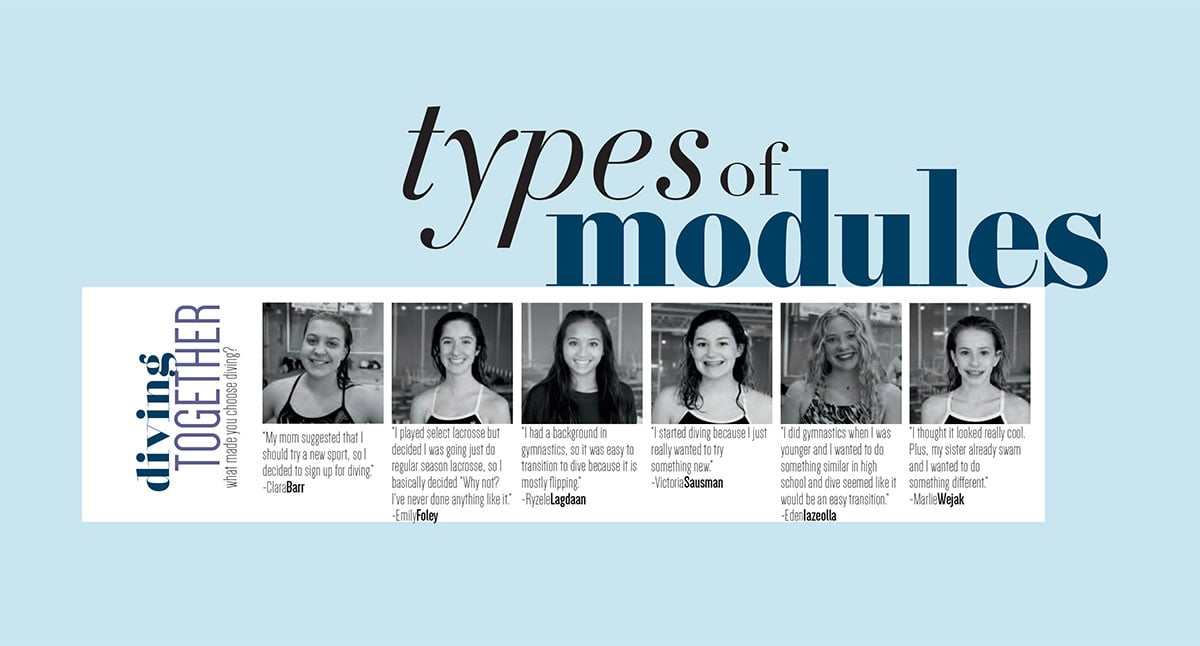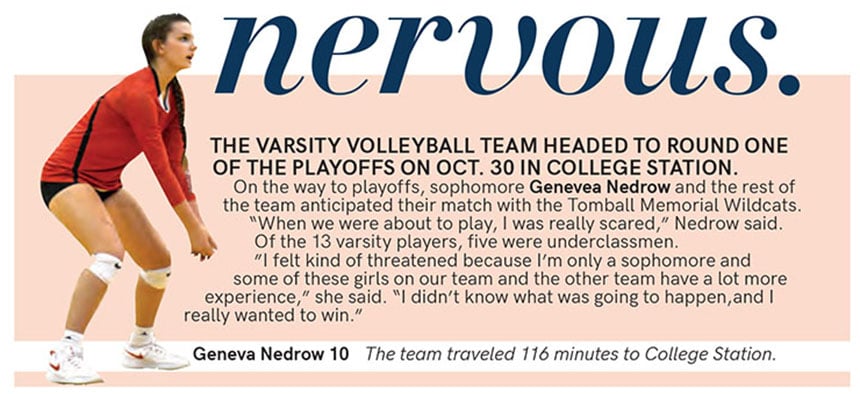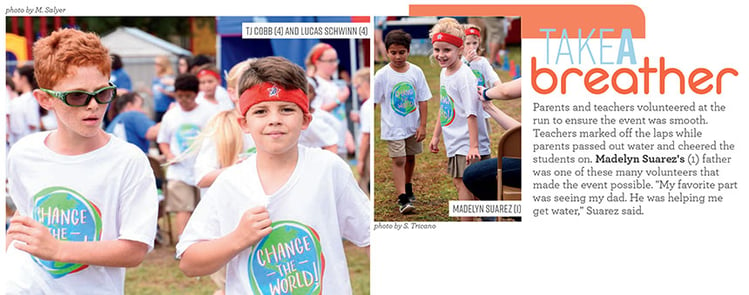
Modular design has become a compelling choice for yearbook layouts. Utilizing modules can reap huge benefits: more organized coverage, varied storytelling opportunities and additional photos and students in the book.
If you’ve never tried incorporating modules into your book, check out our introduction to modular design. If you love the idea, you’ll love learning about the different types of modules.
There are thousands of ways to tell a story. For now, we’ll focus on five favorites. For today’s purpose, we’re skipping the traditional module of photos and captions.
Types of modules
Mini-story: It’s just like it sounds—a miniature version of a feature story. Utilize story formula and be done in three to five sentences. You can feature a mini-story in a small module, focusing on a single student, club, event or topic. Or utilize multiple mini-stories as alternative copy to replace the traditional story. This is ideal when classes, clubs or sports are sharing space, like a subvarsity spread that needs to cover two, three or four teams. Additional mini-stories are also a smart option on spreads when you want to tell several stories.
Since mini-stories are concise, they are a fabulous way to teach feature writing to young journalists who are a little nervous about writing a long story. A mini-story is comprised of just a few sentences: lead, quote, transition, quote. Once staffers master the mini-story, they can ask interviewees additional questions to create longer, feature-length stories.

Vista Ridge utilized mini-stories throughout their 2019 book to provide additional coverage and emphasize their theme, “That feeling when.” Notice the miniaturized version of story formula: lead, quote, transition and quote.
Mugs & quotes: A yearbook favorite, this module features quotes with an accompanying picture. The image can be a mug, candid picture or action shot. Because the images should run fairly small, mugs and quotes are a smart way to squeeze more students in the book. Including five, six or seven in the module guarantees a wider band of coverage for the club, class, event or sport.
Cutouts & quotes: The same concept as mugs and quotes, but cutout images are substituted for the mugs. It’s preferred to run cutouts at the bottom of the spread to anchor them or include a line/bar underneath. Cutouts and quotes modules can be feature numerous students or just one.

The Maclay School used a cutouts and quotes sidebar for their Homecoming Spirit Week coverage.
Photo bar: Sometimes called a film strip, this module includes several, related photos with idents instead of captions. Idents, short for identifications, include the name and grade. Photo bar modules are ideal for spreads that need numerous photos, but not always lengthy captions (how many times can you say cheerleaders cheer or tennis players return the ball?). It is imperative an explanatory secondary headline is included to set the scene.
Photo story: Similar to a photo bar, but with one addition: a short mini-story accompanying the photos and idents. This provides additional information and quotes to elaborate on the photos. Photo stories are a smart choice in blended coverage situations, with multiple groups needing coverage on a spread.


